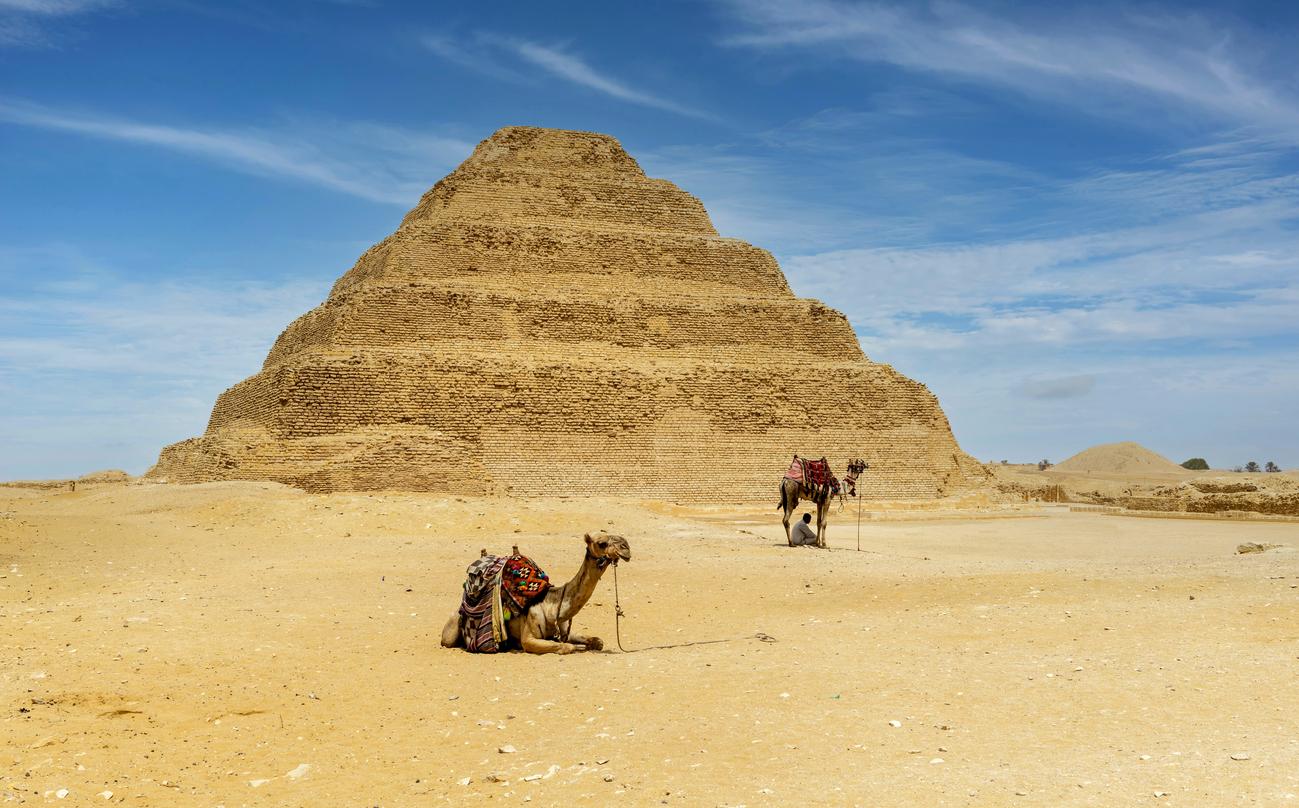
The Step Pyramid of Djoser showcases ancient Egypt's architectural genius as one of the earliest massive stone structures. Built during Pharaoh Djoser’s Third Dynasty reign, it marks a key evolution from mud-brick mastabas to grand stone monuments, highlighting a major leap in construction techniques and royal tomb design during the Old Kingdom.
Visitors are often awed by the Step Pyramid’s unique step-like design and historical importance. Its revolutionary construction set the stage for future pyramids, captivating historians and tourists alike. As one of Egypt’s most fascinating archaeological sites, it continues to draw curious explorers eager to uncover the mysteries of the ancient world.
The Step Pyramid of Djoser is in Saqqara, northwest of ancient Memphis, within a vast burial complex. Saqqara, near Cairo, offers key insights into ancient Egyptian burial practices and architecture. Visitors can explore this historic site, which includes Djoser's pyramid and other monuments. The pyramid served as both a tomb and symbol of Pharaoh Djoser’s divine power and eternal life, central to Old Kingdom society.

The Step Pyramid of Djoser was constructed during the Third Dynasty around 2670–2640 BCE. It was commissioned by Pharaoh Djoser, one of the most notable rulers of Egypt's Old Kingdom. The pyramid was designed by Imhotep, Djoser's vizier and chief architect, who is often credited with being the first recorded architect and engineer in history.
Imhotep's design for the Step Pyramid was groundbreaking. Prior to this, Egyptian tombs were simple mastabas, flat-roofed, rectangular structures made of mud bricks. The decision to use stone and to build a tiered structure symbolized a significant advancement in construction techniques. This innovation marked the beginning of pyramid construction in Egypt, leading to the development of the more famous pyramids at Giza.
The historical significance of the Step Pyramid extends beyond its architectural achievements. It represents a period of prosperity and stability in Egypt's history, where art, architecture, and statecraft flourished. The pyramid's construction was a monumental effort, requiring the coordination of thousands of laborers, showcasing the organizational capabilities of the ancient Egyptians.
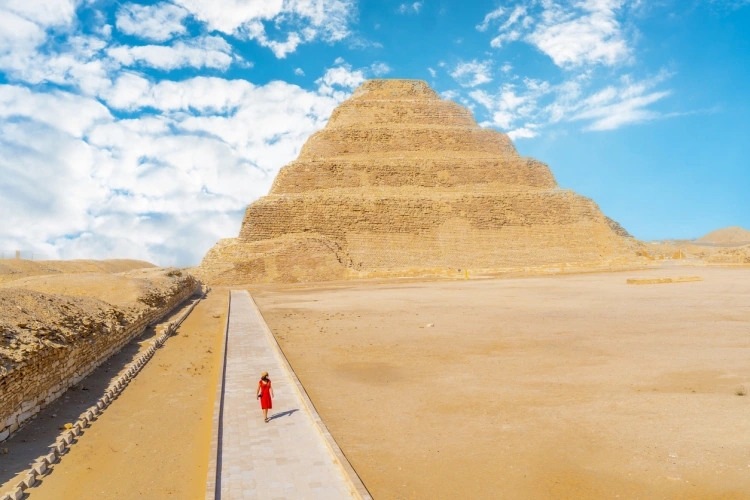
The architectural design of the Step Pyramid of Djoser is a marvel of engineering. It consists of six stacked mastabas of decreasing size, creating a step-like appearance. This design was innovative at the time and set a precedent for future pyramid construction. The structure reaches a height of approximately 62 meters (203 feet) and covers a base area of nearly 109 meters by 125 meters.
The pyramid was constructed using limestone blocks, a departure from the traditional mud-brick construction of earlier tombs. These limestone blocks were quarried locally, and their use represented a major advancement in building technology. The precision with which the stones were cut and placed demonstrates the high level of skill possessed by the ancient Egyptian builders.
Imhotep's role as the architect of the pyramid cannot be overstated. His vision and innovative approach to design and construction not only resulted in a remarkable structure but also laid the groundwork for future architectural endeavors in Egypt. His contributions were so significant that he was later deified and worshipped as a god of wisdom and medicine.
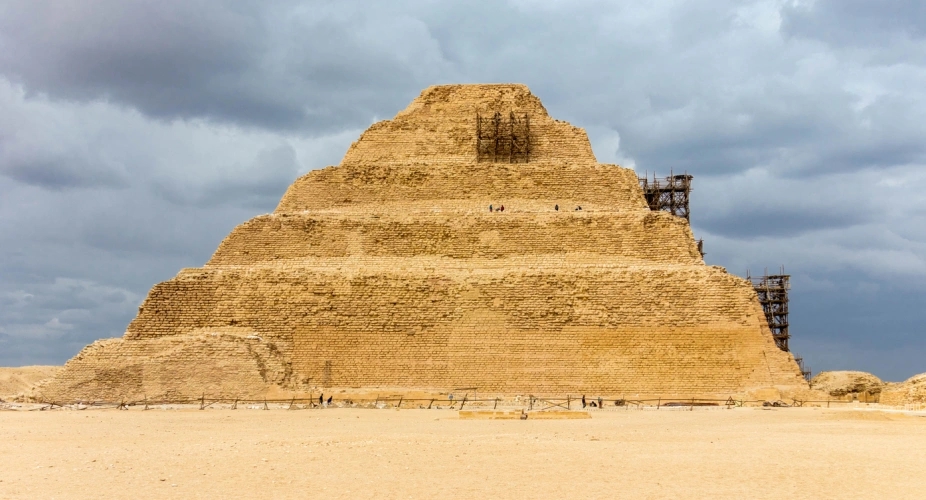
Pharaoh Djoser was a pivotal figure in the creation of the Step Pyramid. His reign marked a period of prosperity and innovation in ancient Egypt, and his decision to build a stone pyramid set a new standard for royal tomb construction. Djoser's vision and ambition were instrumental in the project's inception and execution, highlighting his role as a transformative leader.
Under Djoser's rule, Egypt experienced significant advancements in art, architecture, and administration. His collaboration with Imhotep, his chief architect, and vizier, was crucial in bringing the pyramid to fruition. This partnership between the pharaoh and his advisor exemplifies the fusion of political and architectural prowess that defined Djoser's reign.
Djoser's contributions to Egyptian history extend beyond the construction of his pyramid. He is remembered as a progressive ruler who implemented social and economic reforms, fostering a culture of innovation and growth. His legacy is immortalized in the Step Pyramid, which stands as a symbol of his enduring impact on Egyptian civilization.
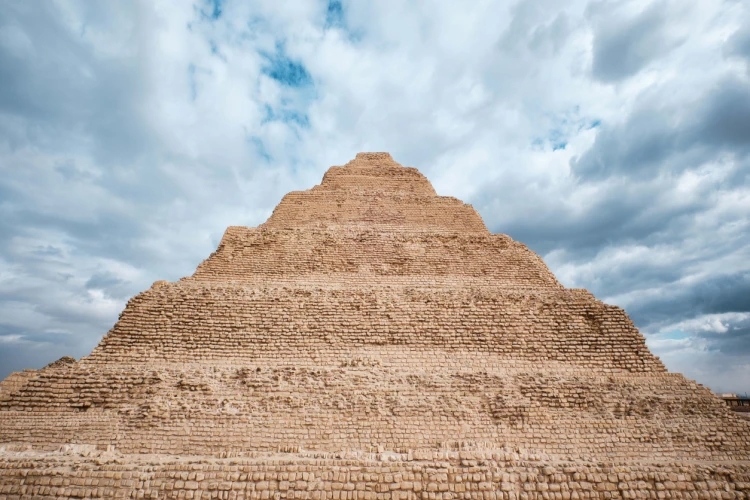
The Step Pyramid of Djoser holds a unique place in the history of pyramid construction. Unlike the later smooth-sided pyramids, such as those at Giza, the Djoser Pyramid features a stepped design. This distinction highlights the pyramid's role as a transitional structure in the evolution of Egyptian tomb architecture.
In comparison to the Great Pyramid of Giza, the Djoser Pyramid is smaller in scale but no less significant in its historical context. The Great Pyramid, built for Pharaoh Khufu, represents the pinnacle of pyramid construction, with its precise engineering and monumental scale. However, without the innovations and advancements made during the construction of the Djoser Pyramid, such achievements might not have been possible.
The Djoser Pyramid's impact extends beyond Egypt, influencing architectural styles and techniques in other ancient civilizations. Its design and construction methods have been studied by archaeologists and historians, shedding light on the technological and cultural exchanges that occurred between ancient societies.
The construction of the Step Pyramid of Djoser involved several innovative techniques that revolutionized ancient Egyptian architecture. One of the most significant innovations was the use of limestone blocks instead of traditional mud bricks. This shift not only enhanced the durability of the structure but also allowed for more intricate architectural designs.
Another key innovation was the step-like design of the pyramid itself. By stacking six mastabas of decreasing size, Imhotep was able to create a monumental structure that symbolized a staircase to the heavens. This design was a departure from earlier flat-roofed tombs and paved the way for the development of smooth-sided pyramids in later dynasties.
The construction process also involved advanced techniques in stone cutting and transportation. The precision with which the limestone blocks were quarried, shaped, and assembled is a testament to the skill and expertise of the ancient Egyptian builders. These innovations not only contributed to the success of the Djoser Pyramid but also influenced subsequent architectural endeavors in Egypt.
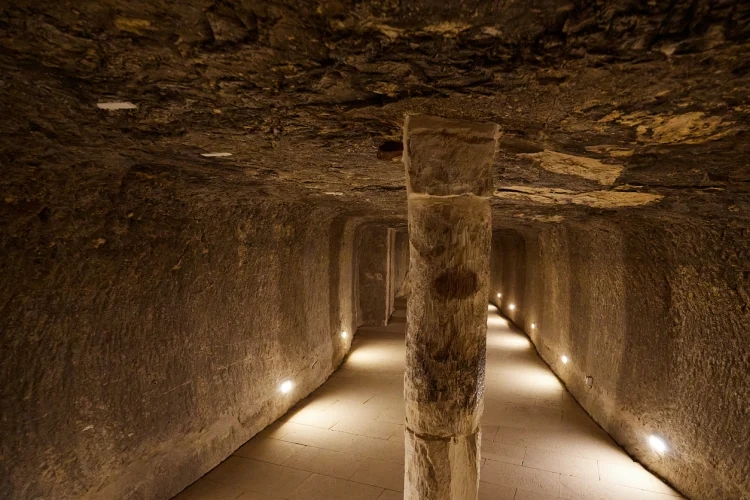
For those planning to visit the Step Pyramid of Djoser, the experience promises to be both enlightening and awe-inspiring. Located in the Saqqara necropolis, the site offers a glimpse into the grandeur and sophistication of ancient Egyptian civilization. To make the most of your visit, consider the following travel tips and insights.
Best Time to Visit: The optimal time to visit Saqqara is during the cooler months, from October to April. The weather is more comfortable for exploring the site, and the crowds are typically smaller.
Guided Tours: Hiring a knowledgeable guide can enhance your experience, providing valuable context and insights into the history and significance of the pyramid and its surroundings.
What to Bring: Be sure to bring sunscreen, a hat, and plenty of water, as the site is exposed to the sun and can be quite hot. Comfortable walking shoes are also recommended, as you'll be navigating uneven terrain.
Other Attractions: While at Saqqara, take the opportunity to explore other nearby sites, such as the Pyramid of Unas and the Tomb of Ti, each offering unique insights into ancient Egyptian culture and architecture.
Visiting the Step Pyramid of Djoser is a journey into the heart of Egypt's rich history. By following these tips, you can fully immerse yourself in the experience and gain a deeper appreciation for the architectural and cultural achievements of this ancient civilization.
The ideal time to visit the Step Pyramid of Djoser is during the cooler months, from October to April. During this period, the weather is more temperate, making it more comfortable for exploring the site and its surroundings. The milder temperatures also enhance the overall experience, allowing visitors to fully appreciate the grandeur of the pyramid and its historical significance.
Visiting early morning or late afternoon offers fewer crowds and softer light for photos, creating a peaceful atmosphere to enjoy the site's history. Though summers are hot, early or late visits with sun protection and hydration make the experience rewarding despite the heat.
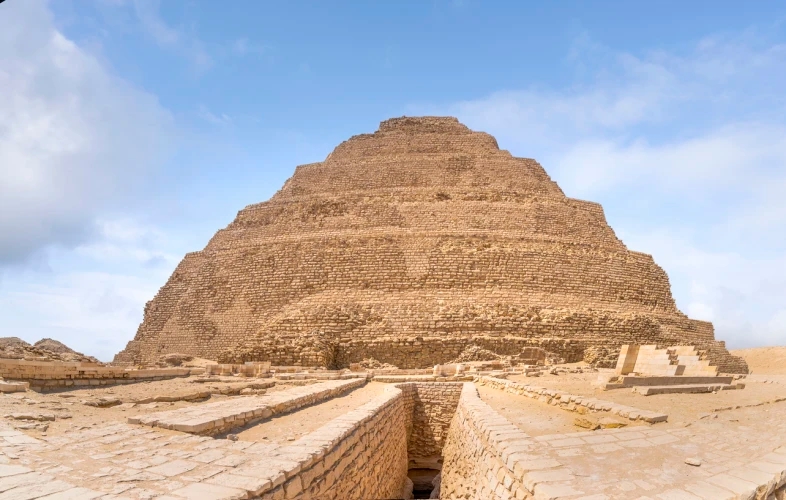
The Step Pyramid of Djoser remains an enduring symbol of ancient Egypt's architectural ingenuity and cultural legacy. Its innovative design and construction techniques laid the foundation for subsequent developments in pyramid architecture, influencing countless generations of builders and architects. As the first pyramid ever constructed, it holds a unique place in the annals of history, representing a pivotal moment in the evolution of monumental architecture.
The Step Pyramid continues to inspire visitors worldwide. Explore its mysteries and grandeur with Egypt Tours, and deepen your understanding of ancient Egyptian beliefs, practices, and achievements on an unforgettable journey.
Q1. What is the Step Pyramid of Djoser?
It is the earliest colossal stone pyramid in Egypt, built as a tomb for Pharaoh Djoser during the Third Dynasty.
Q2. Where is the Step Pyramid of Djoser located?
It is located in the Saqqara necropolis, near the ancient city of Memphis, southwest of Cairo.
Q3. Why is it called the “Step” Pyramid?
Because it has a unique stepped design, with six mastaba-like layers stacked on top of each other, unlike the smooth-sided pyramids that came later.
Q4. Can I go inside the Step Pyramid of Djoser?
Yes, visitors can explore some interior chambers, but access is limited to protect the structure.
Q5. How old is the Step Pyramid of Djoser?
It was constructed around 4,700 years ago, during Egypt’s Third Dynasty (circa 2670–2650 BCE).
Q6. What makes the Step Pyramid of Djoser significant in Egyptian history?
It marks a major architectural breakthrough as the first large-scale stone monument and influenced future pyramid construction.
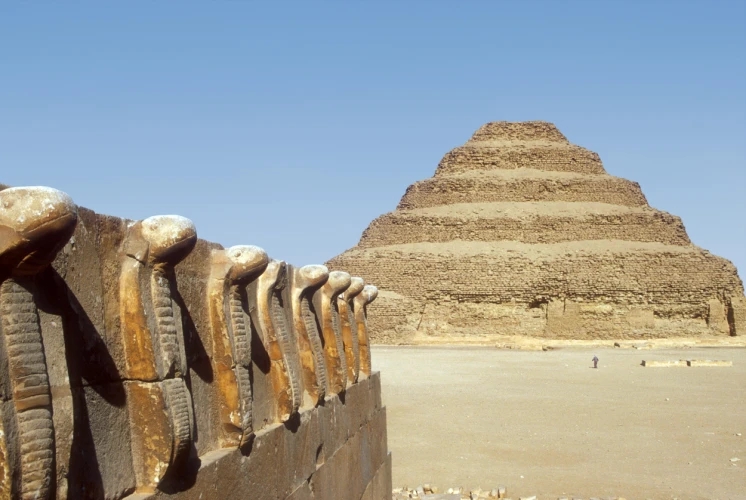

© Copyright 2025 Get Egypt Tour. All rights reserved.